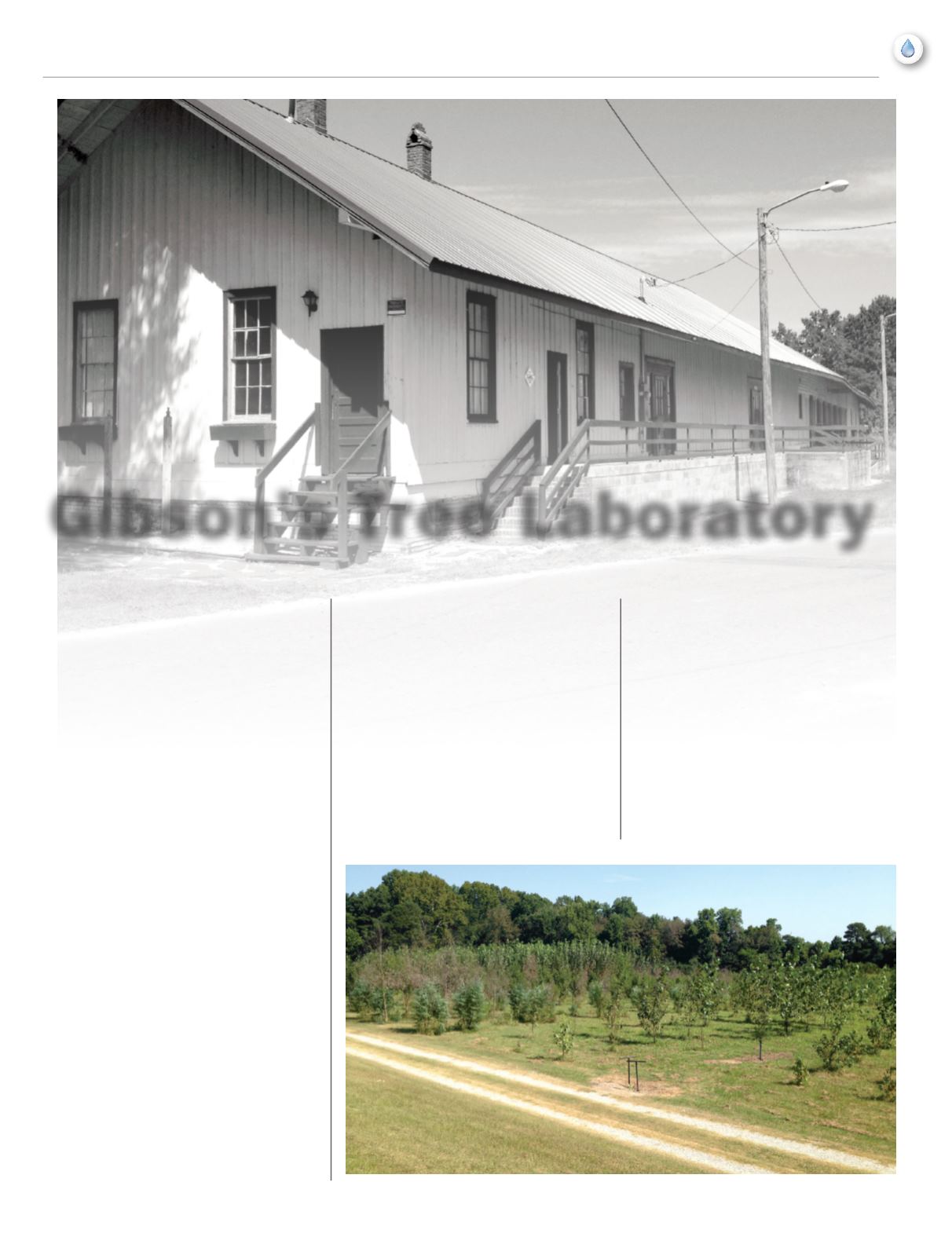
U
Fall 2014
|
11
feature
sed to be, when I thought of Gibson, I thought
of Gibson guitars, known for their excellent
quality and tone. Not that I play; I just play at
it. But now when I think of Gibson, I think of
the Town. Gibson is a unique southern town
located in the Sand Hills of North Carolina’s
coastal plain that Rural Water got to visit last
month. The Town’s Public Works Director,
Greg Leonard, is unique too. He not only
plays a mean guitar (an Ibanez, I think), but
also is a museum curator for the Town, and
operates a spray irrigation field that, if not
one-of-a-kind, is certainly not run-of-the-mill.
NCRWA got to meet Mr. Ronnie Hudson,
Mayor, during our interview. He told us
that the Town had some problems with
compliance until Greg came along. Greg told
us about the backflow repairs he made on
some check valves that were bypassing. The
initial estimate for replacing the check valves
was about $6,400, but Greg rebuilt the valves
and replaced their stainless steel screws for a
total cost of repair at about $30! The Town’s
collection system has been smoke tested
(with help from North Carolina Rural Water
Association), the manholes redone, and the
lift stations re-sealed.
We got right down to business and began
asking Greg about the Town’s spray irrigation
field and wastewater treatment lagoons. The
spray field is more than seven acres in size,
and there are two lagoons. The first lagoon
retains wastewater for 30 days, and the second
lagoon holds the wastewater for an additional
30 days, before it is spray applied to the rather
unusual irrigation field.
The irrigation field is actually a test laboratory
that is under study by NC State University
scientists. Plots of trees, all of different species,
are planted in neatly spaced rows between the
sprinkler heads of the irrigation field. Some of
the cottonwoods in the field are over thirty feet
tall, and have been growing since 2011.
Initially, Gibson used only sycamore trees
in the irrigation field, but when the trees
became blighted, they had to be cut down,
and the stumps dug up. The Town contacted
the Forestry Extension in 2011, and NC State
professors Dr. Elizabeth Nichols and Dr.
Gibson’s Tree Laboratory
By Keith Starner, P.G.


